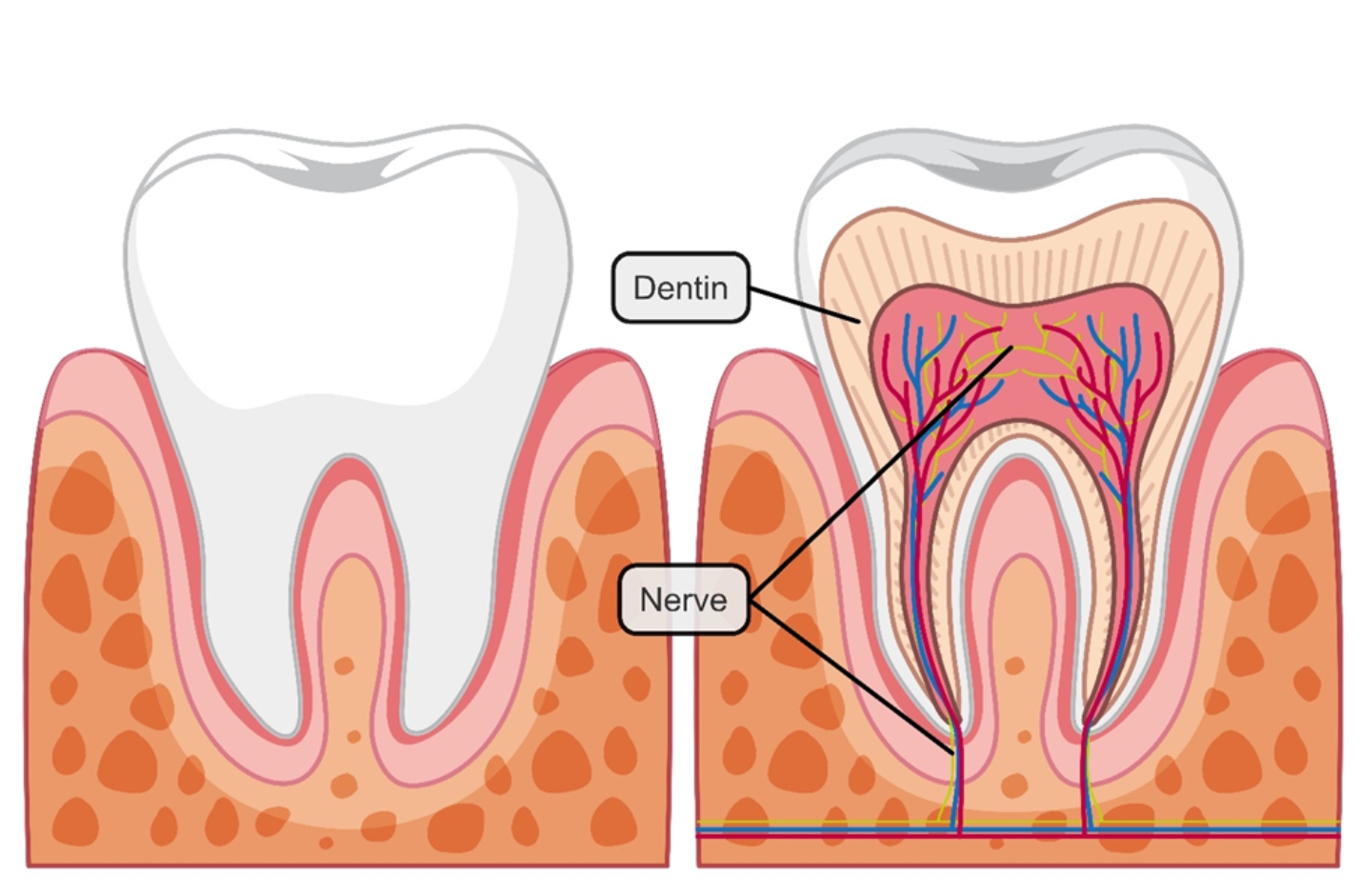I’ll never forget the day I bit into a popsicle on a scorching summer afternoon - my entire mouth lit up with a sharp, electric jolt. If you’ve ever experienced that kind of sudden, nerve-rattling pain when eating or drinking something hot or cold, you know exactly how disruptive tooth sensitivity can be. But what the heck really causes that flash of agony, and more importantly, how can we prevent it from happening again?
Let’s learn about the underlying reasons behind tooth sensitivity, identify common triggers, and then dive into treatments; both professional and at-home remedies that can offer genuine relief. By the end, you’ll have a clearer picture of how to safeguard your pearly whites from that cringe-worthy zinging sensation.
Understanding Tooth Sensitivity
Exposed Dentin

One major culprit behind sensitive teeth is dentin exposure. Underneath your enamel (the outer, protective layer) is a porous material called dentin. Think of dentin like a network of tiny tunnels leading straight to your tooth’s nerve center. Normally, your enamel blocks out irritating substances. But when enamel wears down or gum tissue recedes, those tiny openings become exposed. That’s when hot soup, cold ice cream, or even a blast of winter air can make you wince.
Gum Recession
Another factor that often goes hand-in-hand with sensitivity is gum recession. When gums pull away from the teeth, it reveals vulnerable areas of the tooth that aren’t usually in the line of fire. This can happen due to vigorous brushing, gum disease, or even natural aging. Once those gumlines start creeping backwards, tooth roots lose their protective covering and become far more reactive to temperature changes and certain foods.
Enamel Erosion
Our teeth work hard every day, grinding away at breakfast cereals, lunch sandwiches, and dinner steaks. Over time, everyday wear and tear, combined with acidic foods and drinks (like citrus fruits, sodas, or sports beverages) can gradually erode enamel. If you add nighttime teeth grinding (bruxism) or an improper brushing technique, the risk of wearing down that protective coat goes up exponentially.
Identifying Common Triggers
Hot and Cold Foods or Drinks
There’s nothing quite like savoring an icy milkshake or sipping a steaming cup of coffee; unless it feels like your teeth are being zapped by a mini lightning bolt. Hot and cold temperature extremes are classic triggers for sensitive teeth, because they can penetrate through the microscopic channels in dentin.
Sweet and Sour Treats
Sugar and acid are another dynamic duo when it comes to provoking tooth sensitivity. Acidic foods, like lemons, pickles, and vinegar, can break down your enamel, leaving nerves more exposed. Sticky candies or sugary desserts can also take advantage of compromised enamel, leading to a stinging or throbbing sensation.
Brushing and Flossing
Even though brushing and flossing are the hallmarks of good dental hygiene, they can sometimes set off sensitivity if you’re being overly enthusiastic. Pushing too hard on the brush or snapping floss between tight spaces can aggravate already sensitive areas, especially near the gumline.
Latest Treatments and How They Work
Desensitizing Toothpaste
One of the most straightforward remedies for mild sensitivity is switching to a desensitizing toothpaste. These specialized formulas typically contain compounds like potassium nitrate or stannous fluoride, which help block the transmission of sensation from the surface of the tooth to the nerve. While you might not see immediate results, consistent use can build up a protective barrier over time.
Fluoride Varnishes and Gels
When sensitivity becomes more than a passing annoyance, your dentist might suggest applying fluoride varnishes or gels. These treatments strengthen tooth enamel by pushing fluoride into the porous areas, effectively sealing them and reducing the likelihood of irritation. The application process is quick, and many people notice a decrease in sensitivity soon afterward.
Bonding Agents or Sealants
For those with significant recession or enamel loss, dental bonding or sealants can offer a longer-lasting fix. A thin layer of resin material is carefully painted over the exposed root surface, creating a barrier that shields the dentin. This procedure can usually be completed in a single visit and might bring immediate relief from temperature-induced twinges.
Gum Grafting
If gum recession is the root of your problem (pun intended), a gum graft could be the next level of treatment. In this procedure, a small piece of tissue (often taken from the roof of your mouth or a donor source) is grafted onto the recessed area. This new tissue adheres and heals over the exposed root, effectively restoring gum coverage and reducing sensitivity.
Home Remedies and Preventive Measures

Adjust Your Brushing Routine
We’ve all been told to brush twice a day, but technique and tool choice matter just as much. Consider using a soft-bristled toothbrush and lighter pressure. If it helps, think of your toothbrush more like a feather duster than a scouring pad. Overzealous brushing can lead to gum recession and enamel wear.
Rinse With Salt Water
A quick saltwater rinse can reduce inflammation in the gums and help keep bacterial growth in check. Simply dissolve half a teaspoon of salt in a cup of warm water and swish it around your mouth for about 30 seconds. Though it won’t provide dramatic, instant results, regular rinses can support overall gum health and might take the edge off minor sensitivity.
Be Mindful of Food Choices
Monitoring your diet can go a long way. If you’re prone to sensitivity, be cautious about frequent indulgences in acidic or sugary foods. Instead, incorporate tooth-friendly items like cheese, yogurt, leafy greens, and lean proteins. Drinking plenty of water after meals also helps wash away leftover particles and neutralize acids.
When to Consult a Dentist
Although making lifestyle tweaks and trying at-home remedies can offer some relief, persistent sensitivity is a sign you shouldn’t ignore. It could point to more serious concerns like cavities, fractures, or gum disease. If the thought of eating hot soup or enjoying a cold beverage makes you cringe, schedule a checkup. A professional evaluation will help identify the underlying cause and guide you toward the best course of treatment - so you can get back to enjoying life’s little comforts without wincing.
Tooth sensitivity isn’t just a minor inconvenience; it can genuinely affect your quality of life. From shying away from ice-cold drinks at a family gathering to losing the simple pleasure of sipping hot tea on a chilly morning, sensitive teeth can hold you back. By understanding the scientific reasons behind sensitivity, recognizing the triggers, and exploring various treatment options, you’re well on your way to finding relief.
The next time you feel that unsettling twinge, remember that there are practical steps you can take; ranging from a softer brushing technique to professional procedures that rebuild worn enamel and protect exposed roots. And most importantly, don’t hesitate to reach out to your dentist for a personalized evaluation. After all, your teeth play a crucial role in your daily life, so it’s worth giving them the care and attention they deserve.